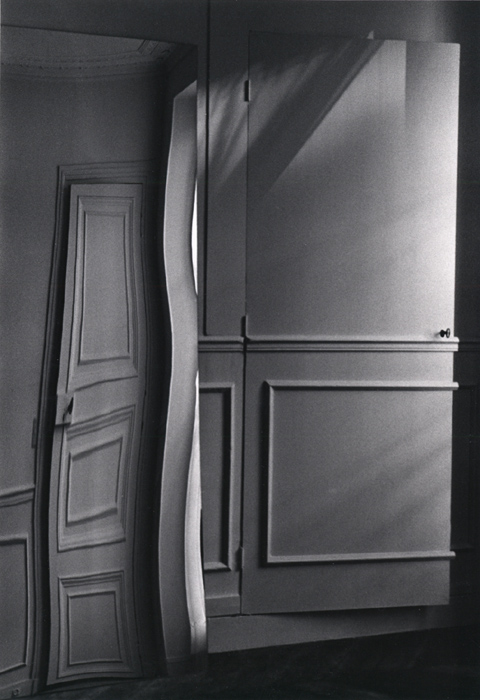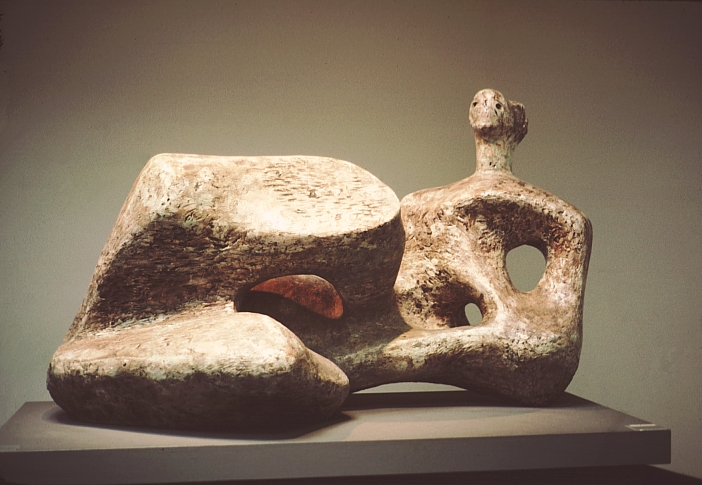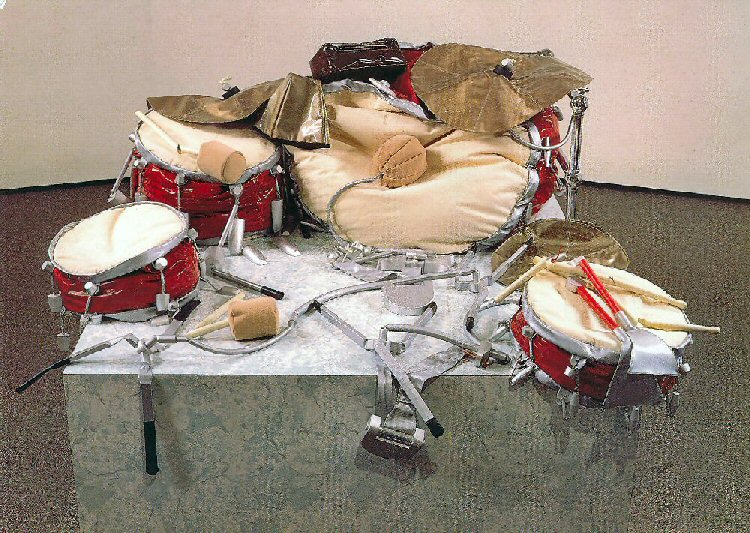Bill Brandt created a varied series of work throughout his life from Portraits, Social Documentary (see Mass Observation) to strange surreal images.
In these above images Brandt has used a maximum depth of field to create Surreal images. He has played with foreshortening to place an ear on the same visual plane as a Sussex beach. In these images fingers become rocks and Brandt reflects himself in a mirror.
Rene Magritte was a surrealist painter and his images share qualities with this series from Brandt. The Surrealists were interested in the world of the unconscious and dreams. In dreams the everyday mixes and creates strange juxtapositions.
Most of us have seen rain and we have seen men in suites (Magritte used these figures as short hand for the bourgeois) – they are fairly everyday. In dreams our it could rain business men - as in this above painting by Magritte. These are the kind of Juxtapositions the Surrealists like to play with.
Above is a portrait of Magritte by Brandt that incorporates elements of both artists work.
Rene Magritte 'The Explanation' 1954
Renne Magritte 'le modele rouge' 1935
These images by Magritte show how he would juxtapose two images to create a new strange image. A carrot becomes a bottle or shoes become feet. Magritte was a Surrealist who were interested in dreams and the unconscious. In a dream you will combine everyday things but by combining them they become strange. You may dream of a hat or a piece of cheese - both very ordinary. However, in your dream they appear to you as a hat made out of cheese - this is an element of surrealism.This is a photograph of Salvador Dalí's 'Téléphone-homard (Lobster Telephone)', 1938. Dali was a Surrealist and one of the key themes of Surrealism was the unconscious mind. They were fascinated by dreams and the juxtapositions that occur in them. Often in a dream we combine everyday things to create something new and strange. We have all seen a plastic lobster and we have all seen a telephone but by combining them together Dali has created something Surreal. The surreal look has slowly merged with popular culture and many adverts today have a surreal quality. Surrealism is now the norm.
This is a still from the 1928 film 'The Andalusian dog' that Dali was involved with (see MOMA exhibition). There is a clever juxtaposition between moving images, most famously the section where an eye is slit but at the key moment the camera jumps to a cloud passing a moon and then to a false eye. Although mild by today's standards the film is still able to shock.
The ideas of the Surrealists were a development of Dada. Many Dada artists became surrealists and Heartfield's roots lie in Dada.

These images are by one of Dada's founding members, Raoul Hausmann, who claimed he invented Photomontage (for more on Photomontage look here and for more on Collage look here). The top image is actually a collage that mixes different printed emphemeria to create a jarring image. This image was created almost a hundred years ago and to Hausmann's contemporarys would have seemed raw and ugly. This busy, hectic visual language is common place today but it would not exist without the experiments of these early 20th century artists.
Andre Kertesz - Paris, Door Distortion, July 29, 1984
Andre Kertesz ‘Distortion 144, Paris’ 1933
Andre Kertesz ‘Distortion 147, Paris' 1933
These strange distorted images are by André Kertesz. ‘Distortions’ (1933) is a series of photographs of women reflected in distorting carnival mirrors that transform them into dreamlike creatures.
Salvador Dali 'Soft Construction With Boiled Beans (Premonition of Civil War)',1936, oil on canvas.
The deformed melting figures of Dali's painting mirrors the distortions that appear in Kertesz's photographs. This painting is one of only a handful in which Dalí turned his attention to the tragedy that beset his homeland on July 17, 1936, when General Francisco Franco led a military coup d'état against the democratically elected Popular Front government. The artist's savage vision of his country as a decomposing figure tearing itself apart preceded the outbreak of the Spanish Civil War and thus prophetically foretold the atrocities committed during this bloody conflict. Other artists who have focused on the Spanish Civil War are Picasso (Guernica), Guillermo del Toro (Pan's Labyrinth) and, during the earlier civil war, Goya (Disasters of War). Dada Photomontage distorted the human form immediately after the first world war. As well as having surreal qualities these images, like the Dada Photomontages could be a reaction to the human horrors of the first world war and the rise of 1930's fascism.
Henry Moore. Working Model for Reclining Figure, 1957. Bronze.
Henry Moore emerged in the 1920s as a radical, experimental and avant-garde figure and was rapidly established as the leading British sculptor of his generation. His principal and enduring subject was the human body, through which he believed ‘one can express more completely one’s feelings about the world than in any other way’. Moore also reflected in his work his reaction to two world wars. The smooth quality of these images are similar to the effect of melting ice and how is distorts as it transforms back into liquid.
Claes Oldenburg 'Giant Soft Drum Set 1'
Sculptures are traditionally cut from rock or wood. They can be moulded from clay. Oldenburg's everyday objects seem to melt into the gallery floor - evaporating into nothing.
















